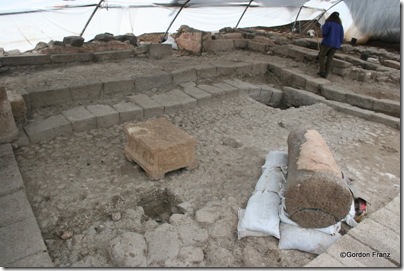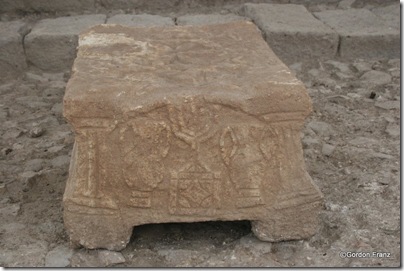Tom Powers began to comment here on yesterday’s post on Magdala, but it grew to such length that he put it up on his own blog. Tom questions the present identification of the synagogue to the first century.
However, I must ask certain questions about the present find, especially in relation to the other synagogues long dated to the late 2nd Temple period in this country – and there are only a handful: Masada, Herodium, Gamla, Jericho, and perhaps one or two others. For one thing, what other synagogue from this period has a mosaic floor (of any kind or design)? What other synagogue lacks stepped benches around the periphery of the hall? What other synagogue has a decorative carved stone set into the middle of the floor? In short, everything about the Magdala structure seems to be an anomaly – if it is what the archaeologists claim.
These are good questions. Typically mosaic floors from this time period are found in houses or palaces, not in synagogues. Other synagogues have benches on the walls, including the 1st century synagogues at Masada and Gamla (for a reconstruction and photo of the latter, see here).
Tom is not questioning the date of the building (contra the post title; see update below), but rather whether this building is in fact a synagogue. It is a curious fact that archaeologists too often tend to find exactly what they’re looking for. Might this be a public building, not necessarily religious in nature? Tom questions whether the inscribed stone with a menorah is a sufficient basis for the synagogue identification. One further question in that regard is what periods the site was occupied.
You can read Tom’s whole post here.
UPDATE: Tom has kindly informed me that I have misrepresented his post. Indeed I have! I read what I expected rather than what he wrote. I apologize to him and to my readers. The above post has been corrected. In case it is not clear above, Tom questions the function of the building, not its date, as I previously stated.

